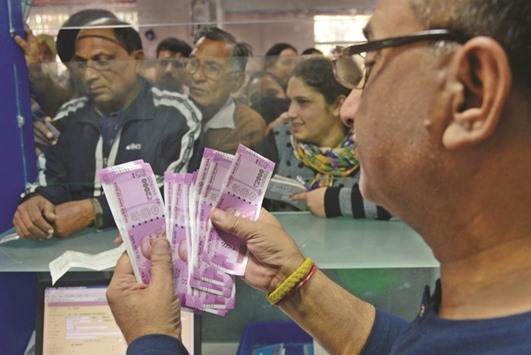Despite repeated interventions by the central bank to slow the slide, the rupee breached its previous low of 68.85 to the dollar hit in August 2013, when India was mired in its worst currency crisis in more than two decades.
The Reserve Bank of India intervened again in the afternoon, after spending around $500mn in the morning, eventually pushing the rupee to a close of 68.73, down from its 68.58 close on Wednesday.
A government spokesman attributed the rupee’s falls to the recent slide in emerging market currencies, which has also seen the yuan hit 8-1/2 year lows.
The rupee has fallen around 3% this month, its biggest fall against the dollar since August 2015, though it has fared better than many other emerging market currencies since Donald Trump’s shock win in the US presidential election.
Analysts said they expected the rupee to remain under pressure, with a fall to as much as 70 in the near-term, depending on global conditions.
“This is a dollar strength story and we need to depreciate against developing markets to maintain the competitiveness of the exchange rate,” said Ashish Vaidya, head of trading at DBS Bank in Mumbai, the financial capital. “The RBI has not been protecting any particular level, but has been containing volatility.”
In 2013, pressure on the current account triggered heavy rupee selling, but this time India is seen as being far better positioned to resist outflows from investors attracted by higher US interest rates.
Expectations that President-elect Trump will pursue an expansionary fiscal policy that will drive inflation higher and lead to higher US interest rates are behind rising US yields that have attracted investors to the dollar.
Since the US election on November 8, foreign investors have sold a net $1.59bn from equity markets and $2.02bn in debt but remain heavy buyers in markets for the year.
Analysts say India’s economic growth, stronger than other emerging countries, should lend the currency support.
Foreign exchange reserves are also near a record and inflation is low.
Traders also described yesterday’s reaction as largely muted as markets had anticipated the breaching of the record low, unlike 2013, when the speed of the tumble in the currency caught many off-guard.
“There is no crisis, but a currency re-evaluation of all emerging market currencies,” said a trader at a financial firm.
There are worries, however, that Prime Minister Narendra Modi’s shock move this month to ditch higher-denominated banknotes could dent growth.
The move, announced on the eve of US elections, has sparked widespread frustration among Indians struggling to get new notes, and is expected to hurt the consumer demand that powers the economy.
India is also still seeing outflows tied to the redemptions of dollar deposits, expected to total around $28bn, that were raised from Indians living abroad to help pull the rupee out of its crisis three years ago.
The fall in the rupee could offer a test of leadership for RBI governor Urjit Patel, who as deputy to predecessor Raghuram Rajan helped steer India out of the depths of the 2013 crisis through actions such as the deposit scheme.
Over the past several years, the RBI has steadily accumulated foreign exchange reserves, which hit a record high of $371.99bn at the end of September.
The government has also taken strong action to keep its fiscal and current account deficits under control, including by keeping a lid on spending and curbing imports of gold.
“This appears to be a short-term trend of rupee weakness and long-term dynamics dictates a stable rupee, due to falling inflation, contracting interest rate and inflation differentials with major trading partners,” financial firm Edelweiss said in a note. Page 6



